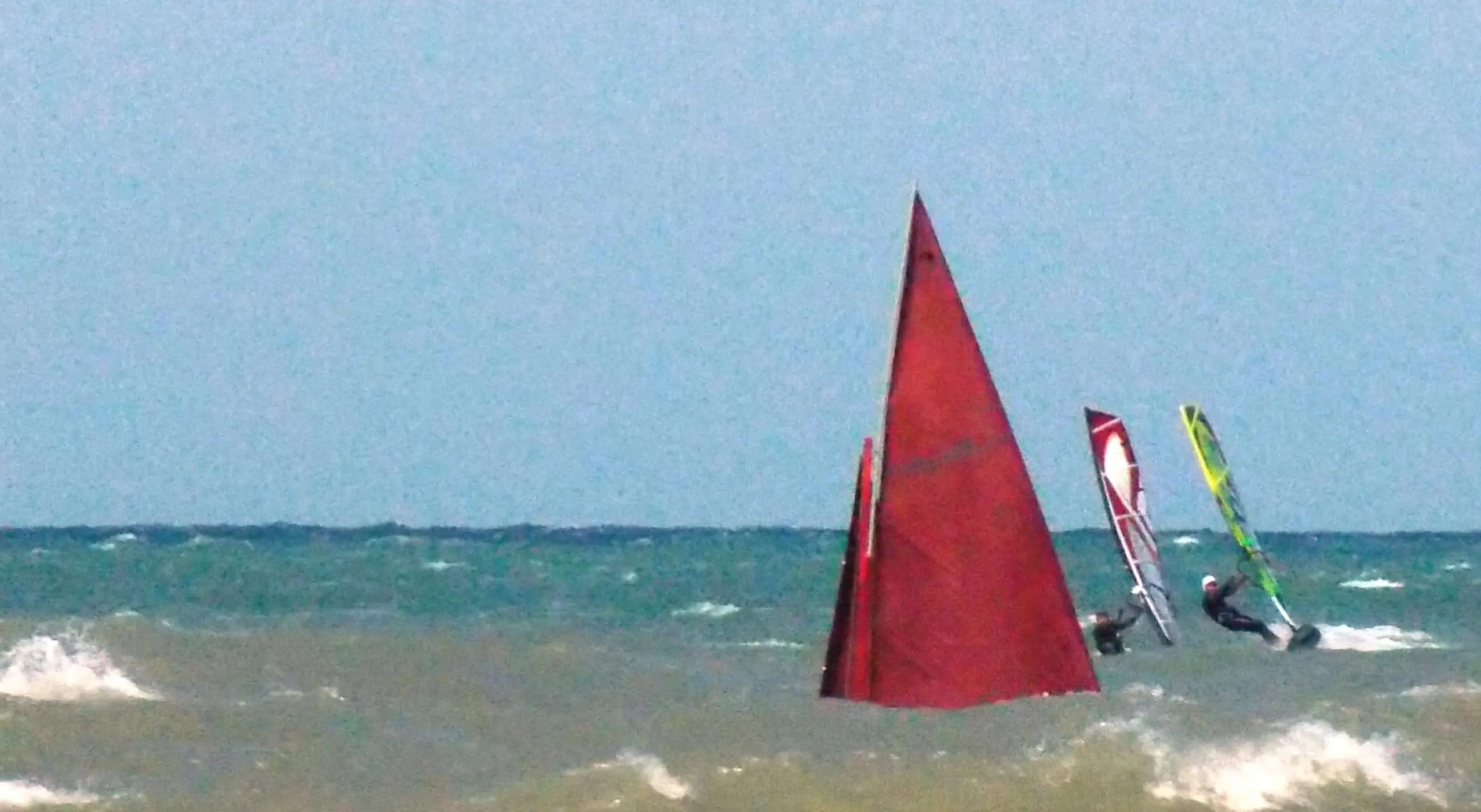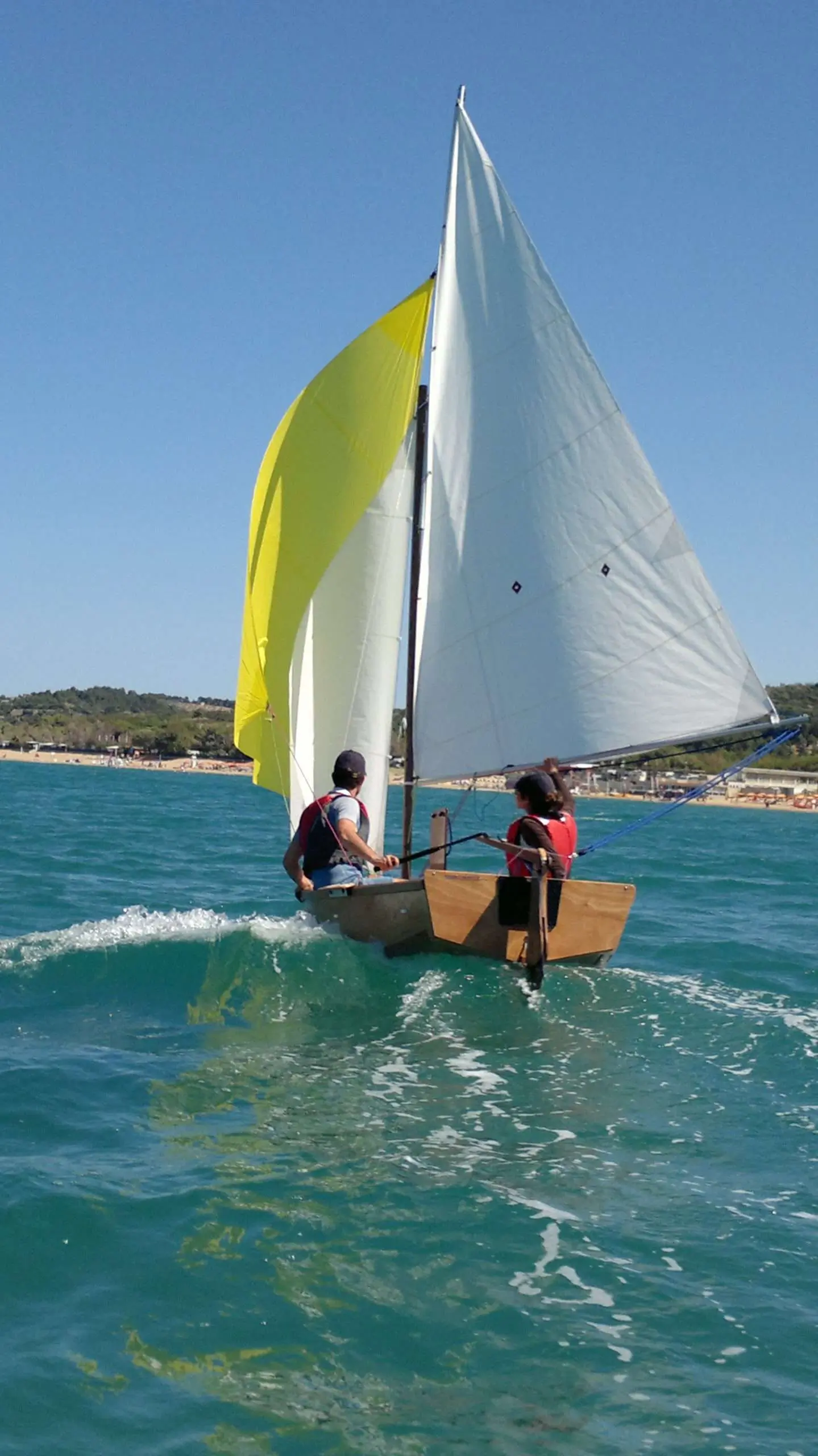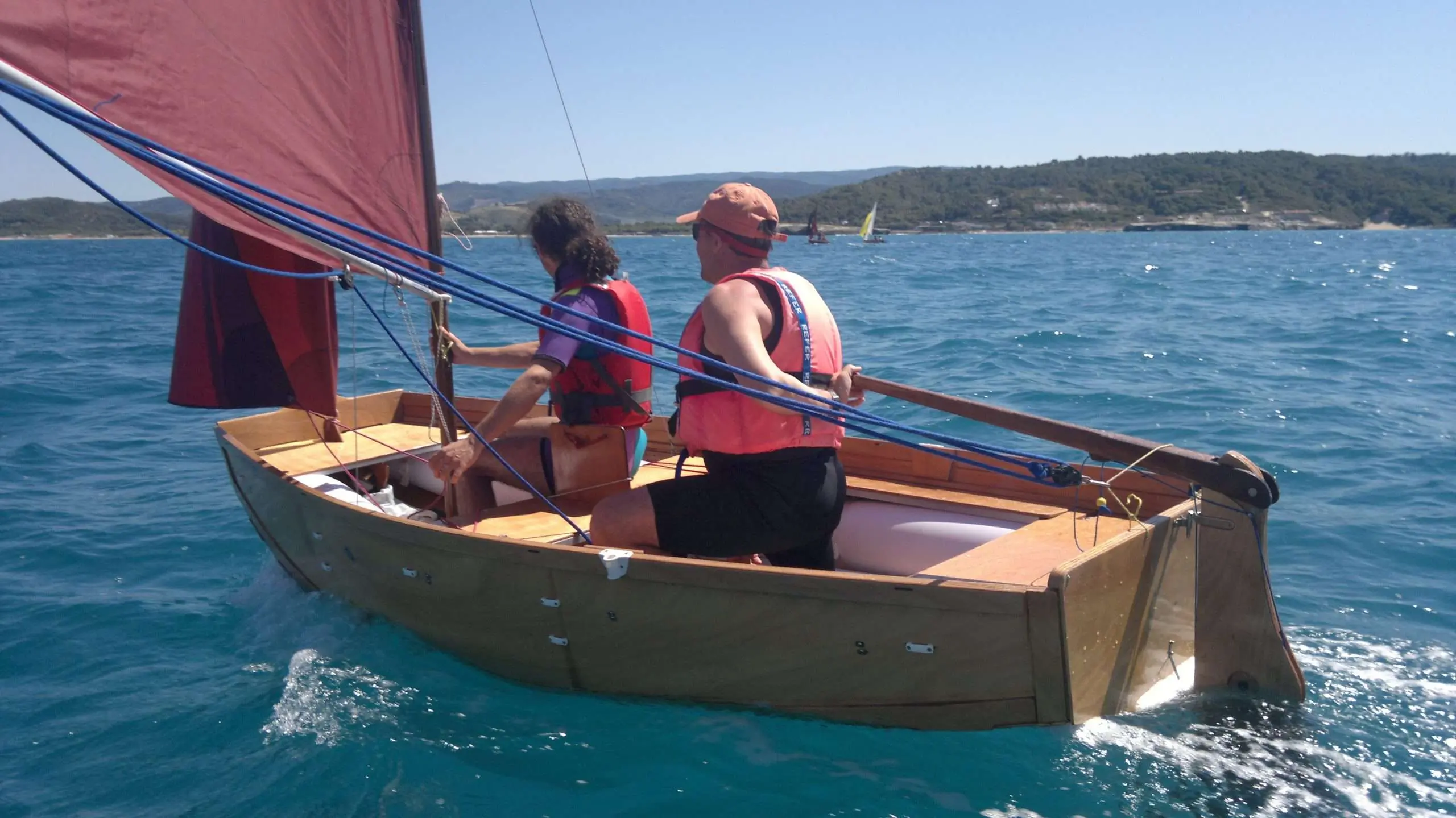The mistral arrives and we are at the beach on vacation. How do we adjust for the arrival on land with the wave starting to break and the wind in the sails? Here we are faced with one of those situations that attract and frighten us at the same time. Landing with a breaking wave on the beach is one of the most exciting experiences that can be lived and told about.
On the one hand there is the ancestral attraction for the land, the return to the port which becomes an ambitious prize. On the other, the proof, with the clear perception of having to measure ourselves against forces of immense power, to be admired in enchantment even before fearing. In fact it is true that there is no ship that can think of fighting and getting away with the breakers that break on the coast.
Fortunately, however, we do not place ourselves with combative arrogance, but with the utmost humility, invoking their benevolence, so that they can only let us pass softly and quickly towards the beach.
When the wind blows from the sea and the breakers arrive on the beach, the return maneuver must always be performed in a simply perfect way. The perfect maneuver not only exists, but it is easy and can be performed smoothly without any apparent difficulty. The imperfect maneuver, on the other hand, soon becomes unmanageable and causes situations which are often fatal for the boats, but fortunately on the other hand with low risks for the crews.
Preparatory stage
Before approaching the route towards the shore, keeping offshore, the situation must be studied well, in order to decide in time which tack to arrive with and which point of the beach to aim for. Since we already know that we will arrive quite fast, the choice must be prudent in order to absolutely avoid gybes in the middle of the critical route. It should therefore be considered to arrive close to the beach with sufficient windward space in order to be able to execute the sudden final luff necessary to stop the boat.
Once the landing trajectory has been decided, take it with a good margin of advance, following a uniform route, already well before reaching the breakers area.
Preparatory actions
- Sheet and base of the mainsail abundantly spun, so as to stall and favor the bow action to the final wind already with a modest luff angle.
- Centerboard well raised but not completely: a small residual piece in the water helps the reactivity of the rudder.
- Jib trimmed to iron as if going close-hauled, foiled downwind of the mainsail, ready to carry out a relief action on the rudder in the event of a yaw.
- Rudder restraint line free from clumsy circuitry and ready to be released in the blink of an eye.
- Crew with balanced weight, correctly arranged, but ready to react if necessary (impact with breakers) and move the center of gravity back with maximum reactivity.
Landing: technique and strategy
During landing, the helmsman must watch his back, in order to try to modify the trajectories to avoid (as far as possible) the points where at that moment there are the worst breakers. Breaking waves must be sailed exactly astern, up to the small yard, otherwise it will be overwhelmed immediately.
While crossing the breakers maintain composure and orthogonal trajectory, without making absurd and useless rudder corrections.
Quick weight shift aft is helpful, but only immediately after impact and not before.
Usually 3 waves are enough to reach the destination. The first and last ones often have limited energy, while the one in the middle will be the most muscular and threatening. You must therefore try to make the most of the first by courageously trimming the mainsail while planing (sheet to be held in hand and recovered out of the influence of the choke), so as to be able to better control the second following from the best position and agile boat. If you start well it won’t be difficult to stay balanced until the end. In this phase we can easily exceed 10-12 knots and therefore we will quickly gain towards the shore. If there is a hint of yawing, check with the rudder and wait confidently for the jib to come to her aid, which happens very quickly. In the meantime it is important to try to keep the boat flat,
Once you have overcome the breakers you will feel in a splendid condition but… be aware that it is not over yet!
Once in shallow water, release the blade retainer, which will then be able to arrange itself horizontally. From now on the rudder is more vulnerable, but still effective, provided you don’t overwork it without any regard. At 20 meters from the point chosen for the final luff which will bring you to a standstill with the bow to the wind, let go of the jib sheet, so that it remains completely unfurled in the last part of the manoeuvre.
The final luff will be as easy as you can imagine. And with a relieved heart you will find yourself leaping into the water to grab the bow of the boat, thus allowing the crew to step off the boat.
Once the most difficult phase has been overcome, however, the time has not yet come for either relaxation or self-satisfaction. The next wave is lurking and you have to think about sheltering the boat immediately. For towing, the best position is always with the bow towards the sea, because other solutions can cause damage to the rudder.



